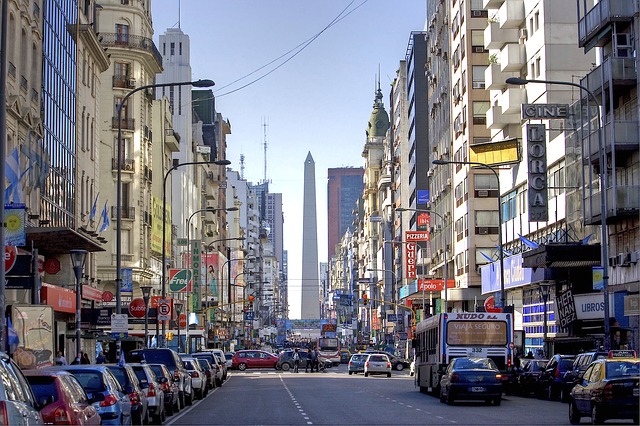The article sheds light on fintech in Latin American countries

Fintech in Latin America: leading countries, stats & forecasts. Source: unsplash.com
Compared to North America or Europe, the fintech industry in the Latin American countries is still quite immature. However, the market is developing quickly, with a few major players acquiring global recognition. Moreover, there’s a number of pressing issues in the region which require strong fintech solutions. Therefore, local startups are determined to meet public demand.
Industry overview
Like the rest of the civilized world, Latin America is struggling to adapt to the new pandemic-related security measures. Such harsh times have created an increased need for digital payments. The development of open banking infrastructure might greatly facilitate the required financial changes. Governments across the region have started to realize that, according to the PYMNTS’ July 2020 Merchants Guide To Navigating Global Payments Regulations have been prepared in collaboration with Ekata.
Most countries are examining and adjusting their guidelines for fintech operations and API support, as well as expanding connectivity among banks, businesses, and consumers.
The aspiring startups and neobanks have great opportunities to serve the unbanked – now more than ever. As cashless transactions currently accompany healthcare, and the traditional financial institutions are failing to satisfy public needs, the willingness to give digital banking a fair chance is rising.
Latin America has already started growing its own herd of fintech unicorns. For a few years already, VCs have been actively backing the LATAM fintech initiatives. Hence, there are a dozen startups that have passed the $1 billion valuation threshold, and a lot more are near this cherished milestone.
Hundreds of new projects have popped up in the fintech segment due to several favorable factors. Firstly, the unique Latin American payment environment faces numerous challenges. For instance, many people lack banking solutions, there’s a very popular trend to pay on installments, SMEs face many hurdles when securing capital to grow their businesses, etc. Those peculiarities are creating huge fintech opportunities.
Secondly, traditional local banks have skyrocketing interest rates and fees, while international players can hardly get into the market due to legal obstacles. Therefore, only local fintechs can create healthy competition. Finally, massive technological and legislative shifts, positive economic forecasts, and renewed consumer optimism facilitate the implementation of fintech initiatives.
Stats & forecasts

Stats & forecasts. Source: pixabay.com
Here are some amazing stats that illustrate the main tendencies of the vibrant fintech industry in Latin America.
- In 6 years, LATAM fintech funding has grown from less than $50 million to over $2.1 billion, with 2019 being the record year of deals and funding. (CB Insights)
- In the first half of 2020, Latin American fintechs raised a total of $525 million across 74 deals. (Latamlist)
- As Latin America bank density continues to lag behind other regions, and the choice of technological alternatives is increasing, more than 141 million people in Brazil, over 82 million people in Mexico, and nearly 30 million people in Colombia started using fintech services as of 2019. (Statista)
- With financial inclusion scores higher than 75 (out of 100) in 2019, Colombia, Peru, and Uruguay ranked as the nations with the best access to financial resources, even above leading Asian markets. In contrast, the lowest-ranked country was Venezuela, primarily due to its current state of widespread economic crisis. (Statista)
- The number of fintech startups in LATAM grew 65% from 2017 to 2018 and more than doubled since 2016. (Latamlist)
- In 2019, the number of unique fintech startups funded in Latin America amounted to 128, while in 2018 the region reported 155 new fintechs. (Statista)
- There are 678 top fintech organizations listed on the Crunchbase, whereas only 1% of these fintechs have gone public.
- In 2018, a total of 1,166 fintech startups had been identified in 18 countries of the region. It showed an increase of 66% over the previous year when only 703 fintech startups were identified in 15 Latin American countries. (IDB and Finnovista)
- Nubank, a neobank headquartered in Brazil, is the most valued Latin American unicorn as of September 2020, with a market capitalization value of around $10 billion. (Statista)
- 70% of the population in the region are either unbanked or underbanked. (Paygilant)
- According to Visual Capitalists, the business opportunity that the unbanked sector represents in Latin America is estimated at $34 billion.
- Latin America has one of the highest adoption rates of smartphones globally. The percentage of the region’s population that used a smartphone in 2018 reached 64%, and that number is expected to reach 78% by 2025. (Crunchbase)
- Digital banking channels account for over 50% of all banking transactions in the region, while 75% of surveyed banks notice a steady growth of customer engagement channeled via Internet banking, mobile banking, and ATMs. (Paygilant)
- In 2018, fintechs in the payment and remittances sector accounted for approximately 24.4% of all fintech initiatives in Latin America. (Statista)
The future of the industry seems bright for many reasons. Firstly, Latin American consumers are becoming increasingly “internet literat”, while traditional banks are still failing to provide adequate digital banking opportunities. The demand for e-commerce and improved regulatory landscape also add up to the fintech craze. Media are already dubbing LATAM the fintech hot spot.
In an interview for FinTech Futures, Andrey Novikov, Cardpay’s general manager of LATAM expressed his utter confidence that the full industry potential is yet to be unleashed.
At the same time, experts and consumers are worried about the COVID-19 crisis and the impact it may have on the further development of fintech initiatives. Predictions are twofold. On the one hand, coronavirus precautions are stimulating the growth of contactless payments and e-commerce. On the other hand, the purchasing capacity and consumer demand are decreasing amidst the economic recession. This may slow down the rise of new enterprises in the given field.
Leading countries

Argentina. Source: pixabay.com
The top countries dominating LATAM’s fintech ecosystem are Brazil, Mexico, Colombia, Argentina, and Chile.
As of May 2019, Mexico was the leading Latin American country in the number of fintech startups, with 394 new companies developing financial technologies. A major engine of growth in Mexico’s startup ecosystem is incubation and acceleration programs. 500 Startups and Startup Mexico are among the most notable programs. Another key reason for the rapid growth is the Mexican Fintech law, approved in September 2018. Between 2010 and 2018, around $22 billion was invested in the country’s startups.
Mexico was followed by Brazil, with 380 fintech startups. In June 2019, Brazil was also the country with the largest number of Insurtech companies in Latin America, with 77 registered startups of this kind. In 2019, Brazil set a new annual record of $860.9 million in fintech funding. One of the first mobile banks and the most successful neobank in Latin America, Nubank, was founded in Brazil in 2013 to tackle the bureaucracy of the Brazilian banking system.
In 2017, 70% of the Brazilian population already had a bank account at some type of financial institution. This is a significant result, considering the average share of the unbanked population in the region. In June 2020, Nubank reached the mark of 25 million customers, up from 5.9 million clients reported at the end of 2018.
The Colombian fintech industry has experienced enormous growth. The rate of new fintech startups rose by 52% in 2017. Being the third-largest country by population in the region, Colombia is also a key destination to which Mexican startups expand. About 30% of Mexican fintech firms started their global expansion process in Colombia in the 2017-18 period.
Fintech activity in Argentina is also on the rise. Now the country has over 110 new startups. The demand for fintech growth is stimulated by the fact that approximately 50% of the adult population in Argentina lacks access to official bank accounts.
Chile is eagerly expecting a law to regulate fintechs announced by the Minister of Finance, Ignacio Briones. The draft is aimed at promoting financial inclusion, creating jobs, encouraging healthy competition, and reducing costs within financial markets. In 2019, the Chilean fintech market grew 27%, despite the complicated political situation and lack of regulation. There are currently around 140 companies in the sector.
SEE ALSO:








